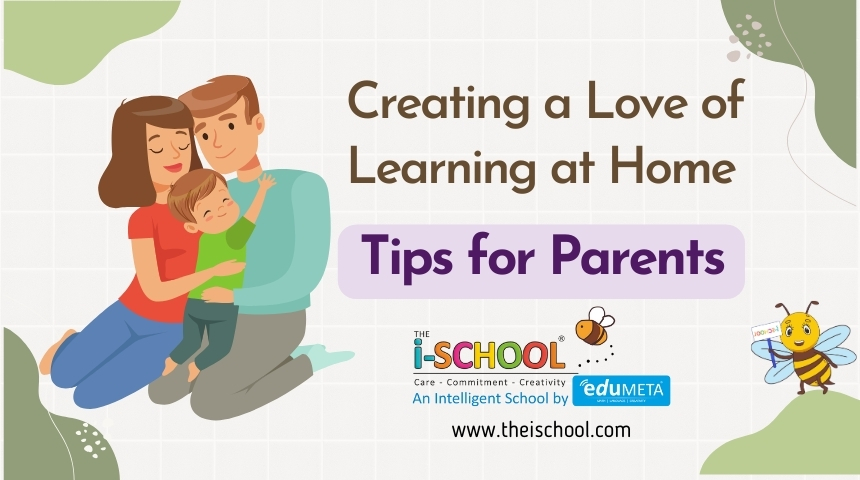Creating a Love of Learning at Home: Tips for Parents

Curiosity is a natural human instinct, and fostering a love of learning in your child starts at home. It’s not just about memorizing facts or drilling worksheets; it’s about creating an environment that encourages exploration, discovery, and a lifelong thirst for knowledge. Here are some tips to help you ignite that spark in your child:
Embrace Curiosity:
Be a role model for curiosity! Ask open-ended questions, follow your child’s lead when they express interest in something, and encourage them to “why” and “how.”
Make Learning Fun:
Turn everyday activities into learning opportunities. Count groceries together, bake cookies while exploring fractions, or have a science experiment with baking soda and vinegar. Learning shouldn’t feel like a chore!
Read Aloud Together:
Reading exposes children to new vocabulary, expands their imagination, and fosters a love for language. Make reading time a daily ritual, let your child choose interesting books, and take turns creating silly voices for characters.
Explore the World Around You:
Take trips to libraries, museums, zoos, or parks. Let your child experience different environments, ask questions about what they see, and collect interesting objects to spark further exploration at home.
Provide Open-Ended Play Materials:
Blocks, Legos, art supplies, and dress-up clothes allow for creativity and open-ended exploration. These materials encourage problem-solving, imagination, and the freedom to learn through play.
Limit Screen Time:
While educational apps and shows have their place, excessive screen time can crowd out opportunities for active, hands-on learning. Set clear limits on screen time and encourage active play and exploration instead.
Create a Learning Space:
Dedicate a space in your home for learning and exploration. This could be a reading nook, an art corner, or a science experiment station. Having a designated space helps children focus and encourages independent learning.
Focus on the Process, Not Just the Product:
Don’t get bogged down in perfect grades or finished projects. Celebrate the effort your child puts into learning, their curiosity, and their willingness to explore new things.
Make Learning a Family Activity:
Learn alongside your child! Take a cooking class together, research a topic that interests them, or build a model together. Show them that learning is something everyone enjoys, regardless of age.
By following these tips, you can create a nurturing and stimulating environment that encourages your child’s natural curiosity and sets them on a path of lifelong learning. Remember, the most important thing is to have fun and enjoy the journey together!
